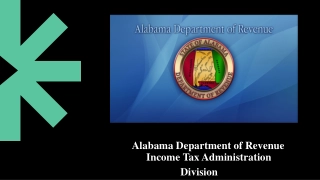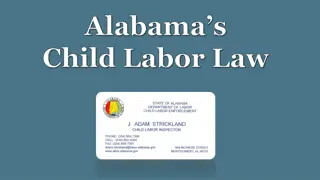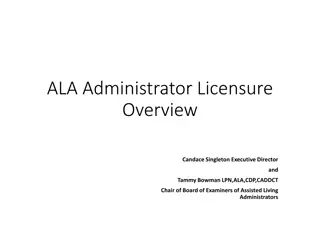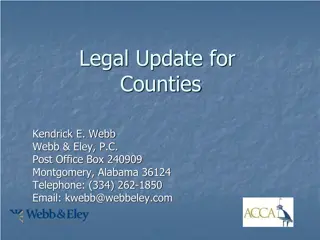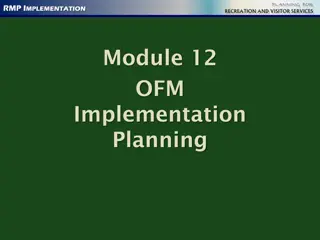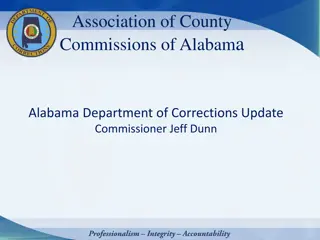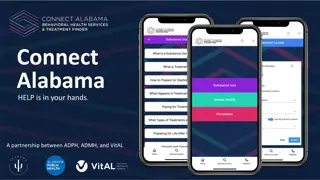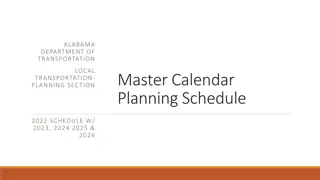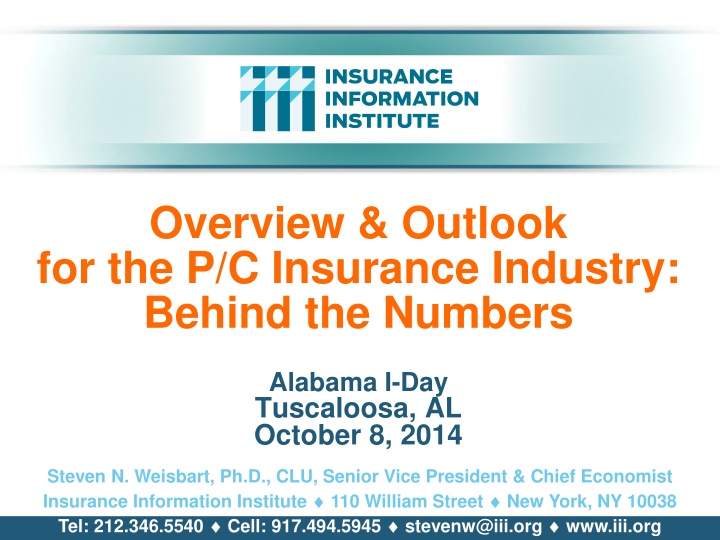
P/C Insurance Industry: Performance Trends and Outlook
Gain insights into the P/C insurance industry's performance trends and outlook based on key statistics and data analysis. Explore changes in net premiums written, underwriting profits, and combined ratios over the years to understand the industry landscape. Stay informed about significant developments shaping the sector, such as CAT losses, reserve releases, and market conditions.
Download Presentation

Please find below an Image/Link to download the presentation.
The content on the website is provided AS IS for your information and personal use only. It may not be sold, licensed, or shared on other websites without obtaining consent from the author. If you encounter any issues during the download, it is possible that the publisher has removed the file from their server.
You are allowed to download the files provided on this website for personal or commercial use, subject to the condition that they are used lawfully. All files are the property of their respective owners.
The content on the website is provided AS IS for your information and personal use only. It may not be sold, licensed, or shared on other websites without obtaining consent from the author.
E N D
Presentation Transcript
Overview & Outlook for the P/C Insurance Industry: Behind the Numbers Alabama I-Day Tuscaloosa, AL October 8, 2014 Steven N. Weisbart, Ph.D., CLU, Senior Vice President & Chief Economist Insurance Information Institute 110 William Street New York, NY 10038 Tel: 212.346.5540 Cell: 917.494.5945 stevenw@iii.org www.iii.org
2013: Best Year (So Far) in the Post-Crisis Era Performance Improved with Lower CATs, Firming Markets 2 2
P/C Net Premiums Written: % Change, Quarter vs. Year-Prior Quarter 2014:Q1 marked the 16th consecutive quarter of y-o-y growth 16.8% 16.7% 20% 15.1% 13.4% 12.5% 15% 10.3% 10.2% 10.2% 10.1% 9.7% 7.8% 7.2% 10% 6.6% 5.6% 5.5% 5.1% 4.8% 4.7% 4.7% 4.2% 4.2% 4.2% 4.1% 4.1% 3.8% 3.6% 3.5% 3.0% 2.9% 2.3% 2.1% 5% 1.7% 1.6% 1.3% 0.5% 0.0% 0% -0.7% -1.3% -1.4% -1.6% -1.6% -1.8% -1.9% -5% -3.7% -4.1% -4.4% -4.6% -5.2% -5.3% -5.8% 2005:Q3 -10% 2002:Q1 2002:Q2 2002:Q3 2002:Q4 2003:Q1 2003:Q2 2003:Q3 2003:Q4 2004:Q1 2004:Q2 2004:Q3 2004:Q4 2005:Q1 2005:Q2 2005:Q4 2006:Q1 2006:Q2 2006:Q3 2006:Q4 2007:Q1 2007:Q2 2007:Q3 2007:Q4 2008:Q1 2008:Q2 2008:Q3 2008:Q4 2009:Q1 2009:Q2 2009:Q3 2009:Q4 2010:Q1 2010:Q2 2010:Q3 2010:Q4 2011:Q1 2011:Q2 2011:Q3 2011:Q4 2012:Q1 2012:Q2 2012:Q3 2012:Q4 2013:Q1 2013:Q1 2013:Q3 2013:Q4 2014:Q1 2014:Q2 Sustained growth in written premiums (vs. the same quarter, prior year) should continue through 2014. Sources: ISO, Insurance Information Institute. 3
Underwriting Gain (Loss) All Lines Combined, 1975 2014* Underwriting profit in 2013 was $15.5B ($ Billions) $30 $20 $10 $0 -$10 -$20 -$30 -$40 $1.22B 2014:1H profit -$50 -$60 14:1H 75 76 77 78 79 80 81 82 83 84 85 86 87 88 89 90 91 92 93 94 95 96 97 98 99 00 01 02 03 04 05 06 07 08 09 10 11 12 13 High CAT losses in 2011 led to the highest underwriting loss since 2001. Lower CAT losses in 2013 led to the highest underwriting profit since 2007. * Includes mortgage and financial guaranty insurers in all years. 2014:1H is estimated. Sources: A.M. Best, ISO, Insurance Information Institute.
P/C Insurance Industry Combined Ratio, 2001 2014:1H Higher CAT Losses, Shrinking Reserve Releases, Toll of Soft Market As Recently as 2001, Insurers Paid Out Nearly $1.16 for Every $1 in Earned Premiums Relatively Low CAT Losses, Reserve Releases Relatively Low CAT Losses, Reserve Releases Heavy Use of Reinsurance Lowered Net Losses Avg. CAT Losses, More Reserve Releases Best 120 Combined Ratio Since 1949 (87.6) 115.8 Sandy Impacts Cyclical Deterioration Lower CAT Losses 110 107.5 106.3 102.4 101.0 100.8 100.8 100.1 99.3 99.0 98.4 100 96.7 95.7 92.6 90 2014:1H 2001 2002 2003 2004 2005 2006 2007 2008 2009 2010 2011 2012 2013 * Excludes Mortgage & Financial Guaranty insurers 2008--2012. Including M&FG, 2008=105.1, 2009=100.7, 2010=102.4, 2011=108.1; 2012:=103.2; 2013: = 96.1; 2014.1H: 98.9 Sources: A.M. Best, ISO. 5
P/C Industry Net Income After Taxes 1991 2014:1H Net income rose strongly (+81.9%) vs. 2012 2005 ROE*= 9.6% 2006 ROE = 12.7% 2007 ROE = 10.9% 2008 ROE = 0.1% 2009 ROE = 5.0% 2010 ROE = 6.6% 2011 ROAS1 = 3.5% 2012 ROAS1 = 5.9% 2013 ROAS1 = 10.3% $ Millions $80,000 $65,777 $63,784 $62,496 $70,000 $60,000 $44,155 $38,501 $36,819 $50,000 $35,204 $33,522 $30,773 $30,029 $28,672 $25,980 $40,000 $24,404 $21,865 $20,598 $20,559 $19,456 $19,316 $30,000 $14,178 $10,870 $20,000 $5,840 $3,046 $3,043 $10,000 $0 -$10,000 -$6,970 14:1H 91 92 93 94 95 96 97 98 99 00 01 02 03 04 05 06 07 08 09 10 11 12 13 ROE figures are GAAP; 1Return on avg. surplus. Excluding Mortgage & Financial Guaranty insurers yields a 8.9% ROAS through 2013:Q3, 6.2% ROAS in 2012, 4.7% ROAS for 2011, 7.6% for 2010 and 7.4% for 2009. Sources: A.M. Best, ISO; Insurance Information Institute
Profitability Peaks & Troughs in the P/C Insurance Industry, 1975 2014:1H* ROE History suggests next ROE peak will be in 2016-2017 1977:19.0% 1987:17.3% 25% 20% 2006:12.7% 1997:11.6% 2013 10.4% 15% 9 Years 10% 5% 0% 1992: 4.5% 1975: 2.4% 2001: -1.2% 1984: 1.8% -5% 75 76 77 78 79 80 81 82 83 84 85 86 87 88 89 90 91 92 93 94 95 96 97 98 99 00 01 02 03 04 05 06 07 08 09 10 11 12 13 14 *Profitability = P/C insurer ROEs. 2011-13 figures are estimates based on ROAS data. Note: Data for 2008-2013 exclude mortgage and financial guaranty insurers. Source: Insurance Information Institute; NAIC, ISO, A.M. Best.
Policyholder Surplus, 2006:Q4 2014:1H ($ Billions) $750 Pre-Crisis Peak Drop due to near-record 2011 CAT losses 2007:Q3 $671.6 $662.0 $653.3 $700 $624.4 $650 $587.1 $583.5 $566.5 $570.7 $567.8 $559.2 $559.1 $550.3 $600 $544.8 $540.7 $538.6 $530.5 $521.8 $517.9 $515.6 $512.8 $511.5 $505.0 $496.6 $550 $490.8 $487.1 $478.5 $463.0 $455.6 $500 $437.1 $450 $400 06:Q4 07:Q1 07:Q2 07:Q3 07:Q4 08:Q1 08:Q2 08:Q3 08:Q4 09:Q1 09:Q2 09:Q3 09:Q4 10:Q1 10:Q2 10:Q3 10:Q4 11:Q1 11:Q2 11:Q3 11:Q4 12:Q1 12:Q2 12:Q3 12:Q4 13:Q3 13:Q4 14:Q1 14:Q2 The industry now has $1 of surplus for every $0.73 of NPW, the strongest claims-paying status in its history. 2010:Q1 data includes $22.5B of paid-in capital from a holding company parent for one insurer s investment in a non-insurance business . The P/C insurance industry entered the second half of 2014 in very strong financial shape. Sources: ISO, A.M .Best. 8
Profitability in P/C Markets in Alabama and Neighboring States Analysis by Line and State 9
Return on Net Worth, All Lines: 2002-2012 AL MS GA 25% 20% 15% 10% 5% 0% -5% -10% -15% -20% -25% -30% -35% 02 03 04 05 06 07 08 09 10 11 12 Source: NAIC. 10
Return on Net Worth, All Lines: 2002-2012 AL FL TN 25% 20% 15% 10% 5% 0% -5% -10% -15% -20% -25% -30% -35% 02 03 04 05 06 07 08 09 10 11 12 Sources: NAIC. 11
Return on Net Worth, All Lines: 2003-2012 Average, by State 10% 8.6% 7.9% 8% 5.5% 6% 4.9% 4% 2.0% 2% 0% -2% -4% -6% -6.5% -8% FL US GA TN AL MS Sources: NAIC. 12
RNW PP Auto: Alabama and Neighboring States, 2003-2012, 10-year average 10% 8.1% 8% 5.9% 5.8% 6% 5.5% 4.7% 4% 2% 0% AL MS TN GA FL Sources: NAIC. 13
RNW HO: Alabama and Neighboring States, 2003-2012, 10-year average 0.0% 0% -5% -7.2% -10% -15% -14.4% -16.6% -20% -25% -24.7% -30% FL GA AL TN MS Sources: NAIC. 14
RNW CMP: Alabama and Neighboring States, 2003-2012, 10-year average 8% 7.3% 5.7% 6% 4% 1.8% 2% 0% -2% -2.2% -4% -3.7% -6% FL GA TN AL MS Sources: NAIC. 15
RNW WC: Alabama and Neighboring States, 2003-2012, 10-year average 12% 11.0% 10% 7.6% 7.4% 8% 6.9% 6% 4.3% 4% 2% 0% FL MS AL TN GA Sources: NAIC. 16
The Strength of the Economy Will Influence P/C Insurer Growth Opportunities Growth Will Expand Insurer Exposure Base Across Most Lines 17 17
Real Quarterly GDP Growth Since the Great Recession, and Forecast Additional growth forecast by average of 10 most optimistic models 5% 4% 1.0% 1.0% 1.1% 1.1% 1.0% 0.9% 3% 4.6% 4.6% 4.5% 3.9% 3.9% 3.5% 2% 2.9% 2.7% 2.7% 2.5% 2.5% 2.5% 2.5% 2.4% 2.4% 2.4% 2.4% 2.3% 1.8% 1.7% 1.6% 1% 1.3% 0.8% 0.1% 0.1% 0% -1.5% -2.1% Growth forecast by average of 10 least optimistic models -1% -2% Since the Great Recession ended, even 3% real growth in a quarter has been unusual (only 6 times in 20 quarters) -3% 09:3Q 09:4Q Demand for insurance continues to be affected by sluggish economic conditions, but the benefits of even slow growth will compound and gradually benefit the economy broadly. 10:1Q 10:2Q 10:3Q 10:4Q 11:1Q 11:2Q 11:3Q 11:4Q 12:1Q 12:2Q 12:3Q 12:4Q 13:1Q 13:2Q 13:3Q 13:4Q 14:1Q 14:2Q 14:3Q 14:4Q 15:1Q 15:2Q 15:3Q 15:4Q Forecasts from Blue Chip Economic Indicators; data are quarterly changes at annualized rates. Sources: (history) US Department of Commerce,at http://www.bea.gov/national/index.htm#gdp ; (forecasts) Blue Chip Economic Indicators 9/14; Insurance Information Institute. 18
Real Quarterly GDP Growth by State, 2013 Q1 Q2 Q3 Q4 10.3% 12% 9% 5.7% 4.2% 4.4% 6% 4.0% 3.9% 3.7% 3.2% 3.3% 1.9% 2.3% 2.3% 2.0% 3% 0.9% 0.8% 0.7% 0.1% 0% -0.4% -3% -3.0% AL MS FL GA TN Economic growth varied widely among Alabama and its neighbors in 2013. Not only were the rates of growth different from state to state, but even the direction of growth differed. Data are seasonally-adjusted quarterly changes at annualized rates Source: US Department of Commerce,at http://www.bea.gov/newsreleases/regional/gdp_state/2014/pdf/qgsp0814.pdf 19
Monthly Change in Nonfarm Employment, 2011 - 2014 Average Monthly Gain Thousands 2011: 173,600 2012: 186,300 2013: 194,250 2014*: 226,700 400 360 322 350 304 280 237274 229267 300 248 243 243 226 225 222 221 217 250 214 168212 203 203 203 149202 201 199 197 164196 183 180 200 164 161 160 150 144 141 122 150 110 106 102 96 88 84 100 70 50 0 Mar-13 Mar-11 Mar-12 Mar-14 Dec 13 Feb-11 Feb-12 Feb-13 Feb-14 Jul-11 Jul-12 Jul-13 Jul-14 May-11 May-12 May 13 May 14 Jan-11 Jun-11 Jun-12 Jan-13 Jan-14 Jun-14 Jan-12 Jun-13 Oct-11 Oct-12 Oct-13 Nov-11 Dec-11 Apr-12 Nov-12 Dec-12 Nov-13 Apr-11 Apr-13 Sep-13 Apr-14 Aug-14 Aug-11 Sep-11 Aug-12 Sep-12 Aug-13 Sep-14 The pace of job growth varies considerably from month to month. *Seasonally adjusted. Aug 2014 and Sept 2014 are preliminary data. Monthly gain for 2014 is average for January-August Sources: US Bureau of Labor Statistics; Insurance Information Institute 20
AL Change in Nonfarm Employment: Quarterly, 2009:Q3 2014:Q3* (Thousands) 14.2 13.2 15 10.7 8.4 10 6.55.3 5.2 5.2 4.4 5 2.1 1.6 0.7 0.2 0 -1.2 -5 -4.6-2.9 -3.4 -4.4 -10 -8.6 -15 -16.2 -20 2009:Q3 2009:Q4 2010:Q1 2010:Q2 2010:Q3 2010:Q4 2011:Q1 2011:Q2 2011:Q3 2011:Q4 2012:Q1 2012:Q2 2012:Q3 2012:Q4 2013:Q1 2013:Q2 2013:Q3 2013:Q4 2014:Q1 2014:Q2 Nonfarm employment growth in Alabama since the end of the Great Recession is still very variable, quarter to quarter; still, there are now 36,000 more people working in Alabama than in June 2009. *seasonally-adjusted Source: US Bureau of Labor Statistics http://www.bls.gov/data/#employment; Insurance Information Institute 21
Nonfarm Employment, Birmingham vs. Montgomery, Mobile, & Tuscaloosa: Quarterly, 2008:Q1 2014:Q2* Index 2008:Q1=100 Mobile Birmingham Montgomery Tuscaloosa 103 102 101 100 99 98 97 96 95 94 93 92 2008.1 2008.3 2009.1 2009.3 2010.1 2010.3 2011.1 2011.3 2012.1 2012.3 2013.1 2013.3 2014.1 Employment in Alabama s major urban areas slumped sharply in the Great Recession, and all but Tuscaloosa are still down vs. 2008:Q1 *seasonally adjusted. Sources: US Bureau of Labor Statistics, US Department of Labor; Insurance Information Institute.
Full-time vs. Part-time Employment, Quarterly, 2003-2014: WC Implications Recession shifted employment growth from full-time to part-time Full-time Part-time Millions Millions Recession 122 28.5 Pre-recession, most new jobs were full-time 28.0 27.5 119 27.0 26.5 116 26.0 25.5 113 25.0 24.5 110 24.0 2003.1 2003.2 2003.3 2003.4 2004.1 2004.2 2004.3 2004.4 2005.1 2005.2 2005.3 2005.4 2006.1 2006.2 2006.3 2006.4 2007.1 2007.2 2007.3 2007.4 2008.1 2008.2 2008.3 2008.4 2009.1 2009.2 2009.3 2009.4 2010.1 2010.2 2010.3 2010.4 2011.1 2011.2 2011.3 2011.4 2012.1 2012.2 2012.3 2012.4 2013.1 2013.2 2013.3 2013.4 2014.1 2014.2 Jul-14 The Great Recession shifted employment from full-time to part-time, and the recovery to date hasn t changed that. Full-time employment is still 3.2 million below its pre-recession peak, but part-time recently reached a new peak. Data are seasonally-adjusted. Sources: US Bureau of Labor Statistics, US Department of Labor; Insurance Information Institute.
Private Housing Unit Starts, 1990-2015F Millions of Units Still well below the levels reached in 1998-2002, before the bubble began 2.07 1.96 2.1 1.85 1.80 1.9 1.71 1.64 1.62 1.60 1.57 1.7 1.48 1.46 1.47 1.35 1.36 1.5 1.29 1.20 1.19 1.20 1.3 1.01 1.01 1.1 0.93 0.91 Housing unit starts plunged 72% from 2005- 2009, down 1.5 million, to lowest level since records began in 1959 0.78 0.9 0.61 0.59 0.55 0.7 0.5 0.3 90 91 92 93 Housing starts are rising, but this could be retarded by rising mortgage interest rates. Recently, the fastest growth is in multi-unit residences. Personal lines exposure will grow, and commercial insurers with Workers Comp, Construction risk exposure, and Surety also benefit. 94 95 96 97 98 99 00 01 02 03 04 05 06 07 08 09 10 11 12 13 14F 15F Sources: U.S. Department of Commerce; Blue Chip Economic Indicators (8/14); Insurance Information Institute. 25
US: Pct. Of Private Housing Unit Starts In Multi-Unit Projects, 1990-2014* Units in Multiple-Unit Projects as Percent of Total 40% A NEW NORMAL? In 4 of the last 6 years, over 30% of housing unit starts were in multi-unit projects 30% 20% 35.8% 33.3% 31.4% 31.3% 29.3% 25.0% 23.1% 22.8% 21.5% 20.5% 21.4% 21.4% 20.6% 20.6% 20.3% 19.7% 19.7% 18.9% 18.6% 17.7% 17.7% 17.1% 17.0% 10% 14.2% 12.6% 0% 90 91 92 93 94 95 96 97 98 99 00 01 02 03 04 05 06 07 08 09 10 11 12 13 14* For the U.S. as a whole, the trend toward multi-unit housing projects (vs. single-unit homes) is recent. Commercial insurers with Workers Comp, Construction risk exposure, and Surety benefit. *through July 2014 Sources: U.S. Census Bureau; Insurance Information Institute. 26
Rental Vacancy Rates, Quarterly, 1990-2014 Percent vacant Peak vacancy rate 11.1% in 2009:Q3 11.5 11.0 10.5 Vacancy rate 10.4% in 2004:Q1 10.0 9.5 9.0 8.5 8.0 Latest vacancy rate was 7.5% in 2014:Q2 7.5 7.0 6.5 90:Q1 Before the 2001 recession, rental vacancy rates were 8% or less. We re close to those levels again. => More multi-unit construction? 91:Q1 92:Q1 93:Q1 94:Q1 95:Q1 96:Q1 97:Q1 98:Q1 99:Q1 00:Q1 01:Q1 02:Q1 03:Q1 04:Q1 05:Q1 06:Q1 07:Q1 08:Q1 09:Q1 10:Q1 11:Q1 12:Q1 13:Q1 14:Q1 Sources: US Census Bureau, Residential Vacancies & Home Ownership in the Second Quarter of 2014 (released July 29, 2014) and earlier issues; Insurance Information Institute. Next Census Bureau report to be released on October 28, 2014. 27 27
Auto/Light Truck Sales, 1999-2015F (Millions of Units) It seems likely that we re back to new vehicle sales levels last seen pre-recession 19 17.8 17.5 17.4 17.1 16.9 18 16.9 16.6 16.7 16.5 16.3 16.1 17 15.5 16 14.4 15 13.2 14 12.7 13 11.6 12 10.4 11 10 9 99 00 01 02 03 04 05 06 07 08 09 10 11 12 13 14F 15F Yearly car/light truck sales will keep rising, in part replacing cars that were held onto in 2008-12. New vehicles will generate more physical damage insurance coverage but will be more expensive to repair. PP Auto premium might grow by 6%. Sources: U.S. Department of Commerce; Blue Chip Economic Indicators, 8/14 issue (forecasts); Insurance Information Institute. 28
Auto Loans and other Nonrevolving Credit Outstanding, 1990 2014* $ Billions Outstanding nonrevolving credit grew by 7.8% in 2013 $2,500 $2,250 No growth in outstanding nonrevolving credit for three years $2,000 $1,750 $1,500 $1,250 Spurt began in Dec. 2010 $1,000 $750 $500 '90 '91 '92 '93 '94 '95 '96 '97 '98 '99 '00 '01 '02 '03 '04 '05 '06 '07 '08 '09 '10 '11 '12 '13 '14 Note: Recessions indicated by gray shaded columns. *Seasonally adjusted; Latest data is for June 2014, preliminary Sources: Federal Reserve at http://www.federalreserve.gov/datadownload/Download.aspx?rel=G19&series=8ee7aa36107a130bcc862d44824a3b86&lastObs=&fro m=&to=&filetype=csv&label=include&layout=seriescolumn&type=package National Bureau of Economic Research (recession dates); Insurance Information Institutes. 29 29
Something Unusual is Happening: Miles Driven*, 1990 2014 Billions 3,100 1997 vs. 1992: 13.9% 2002 vs. 1997: 11.5% 2007 vs. 2002: 6.1% 2012 vs. 2007: -3.0% Miles Driven Growth per 5-Yr Span 3,000 2,900 2,800 Some of the growth in miles driven is due to population growth: 1997 vs. 1992: +5.1% 2002 vs. 1997: +7.4% 2007 vs. 2002: +4.7% 2012 vs. 2007: +3.4% A record: miles driven has been below the prior peak for 80 straight months (through June 2014). Previous record was in the early 1980s (39 months) 2,700 2,600 2,500 2,400 2,300 2,200 2,100 '90 '91 '92 '93 '94 '95 '96 '97 '98 '99 '00 '01 '02 '03 '04 '05 '06 '07 '08 '09 '10 '11 '12 '13 '14 *Moving 12-month total. The latest data is for July 2014. Note: Recessions indicated by gray shaded columns.. Sources: Federal Highway Administration (http://www.fhwa.dot.gov/ohim/tvtw/tvtpage.cfm ); National Bureau of Economic Research (recession dates); Insurance Information Institute. 30
Index of Total Industrial Production:* A New Peak in July 2014 105 Many economists expect business investment to rise in 2014, 2015, and 2016 95 July 2014 Index at 103.9, a new peak 85 75 Peak at 100.82 in December 2007 (officially the 1st month of the Great Recession) 65 Recession 55 1/31/1991 1/31/1994 1/31/1997 1/31/2001 1/31/2004 1/31/2011 1/31/2014 1/31/1990 1/31/1992 1/31/1993 1/31/1995 1/31/1996 1/31/1998 1/31/1999 1/31/2000 1/31/2002 1/31/2003 1/31/2005 1/31/2006 1/31/2007 1/31/2008 1/31/2009 1/31/2010 1/30/2012 1/31/2013 Insurance exposures for industrial production will continue growing in 2014, and commercial insurance premium volume with them. *Monthly, seasonally adjusted, through July 2014 (which is preliminary). Index based on year 2007 = 100 Sources: Federal Reserve Board at http://www.federalreserve.gov/releases/g17/ipdisk/ip_sa.txt . National Bureau of Economic Research (recession dates); Insurance Information Institute. 32 32
Private Sector Business Starts: 1993:Q2 2013:Q4* As Strong as Ever? Business Starts 2006: 861,000 2007: 844,000 2008: 787,000 2009: 701,000 2010: 742,000 2011: 781,000 2012: 800,000 2013: 870,000** 2013:Q1 578,000 business starts* Recessions in orange Thousands 226 230 209216221 221 221 221 220 216 220 215 214 214 213 210 210 204209 203209 204208 208 193200207 207 206 206 199206 206 200206 206 210 191199204 204 204 203 192198202 201 201 201 197201 201 200 200 199 199 196 200 188195 195 195 194 182187193 193 191 191 184189 189 189 189 188 188 190 185 185 183 175179 172177 180 175 173 169 170 160 150 93:Q2 94:Q1 95:Q1 96:Q1 97:Q1 98:Q1 99:Q1 00:Q1 01:Q1 02:Q1 03:Q1 04:Q1 05:Q1 06:Q1 07:Q1 08:Q1 09:Q1 10:Q1 11:Q1 12:Q1 13:Q1 *Data posted Jul 30, 2014, the latest available; a classification change in 2013:Q1 resulted in a report of 578,000 businesses started in that quarter. Seasonally adjusted. **2013 number assumes 1st quarter equals average of second-through-fourth quarters Sources: Bureau of Labor Statistics, http://www.bls.gov/news.release/cewbd.t08.htm. NBER (recession dates) 33 33
Dollar Value* of Manufacturers Shipments Monthly, January 1992 June 2014 $ Millions The value of Manufacturing Shipments in June 2014 was $499.8B a new record high. $500,000 $400,000 $300,000 $200,000 Jan 01 Jan 02 Jan 03 Jan 04 Jan 05 Jan 06 Jan 07 Jan 08 Jan 09 Jan 10 Jan 11 Jan 13 Jan 14 Jan-92 Jan-93 Jan-94 Jan-95 Jan-96 Jan-97 Jan-98 Jan-99 Jan-00 12-Jan Monthly shipments in November 2013 exceeded the pre-crisis (July 2008) peak; December 2013, January 2014, and February 2014 slipped a bit. March 2014, then April, then May, then June 2014 (prelim.) set new record highs. *seasonally adjusted; June 2014 is preliminary; data published July 25, 2014. Source: U.S. Census Bureau, Full Report on Manufacturers Shipments, Inventories, and Orders, http://www.census.gov/manufacturing/m3/ 34 34
Nonfarm Payroll (Wages and Salaries): Quarterly, 2005 2014:Q2 Billions $7,750 Latest (2014:Q2) was $7.46 trillion, a new peak--$1T above 2009 trough $7,500 Prior Peak was 2008:Q3 at $6.54 trillion $7,250 $7,000 $6,750 $6,500 $6,250 $6,000 Recent trough (2009:Q1) was $6.23 trillion, down 5.3% from prior peak $5,750 $5,500 05:Q1 05:Q2 05:Q3 05:Q4 06:Q1 06:Q2 06:Q3 06:Q4 07:Q1 07:Q2 07:Q3 07:Q4 08:Q1 08:Q2 08:Q3 08:Q4 09:Q1 09:Q2 09:Q3 09:Q4 10:Q1 10:Q2 10:Q3 10:Q4 11:Q1 11:Q2 11:Q3 11:Q4 12:Q1 12:Q2 12:Q3 12:Q4 13:Q1 13:Q2 13:Q3 13:Q4 14:Q1 14:Q2 Note: Recession indicated by gray shaded column. Data are seasonally adjusted annual rates. Sources: http://research.stlouisfed.org/fred2/series/WASCUR; National Bureau of Economic Research (recession dates); Insurance Information Institute. 35 35
Commercial & Industrial Loans Outstanding at FDIC-Insured Banks, Quarterly, 2006-2014:Q1 $Trillions Commercial lending activity exceeds pre-crisis levels (+36.75% or $430B above mid-2010 trough) $1.61 $1.7 $1.60 $1.57 $1.55 $1.52 $1.6 $1.50 $1.50 $1.49 $1.49 $1.48 $1.45 $1.44 $1.43 $1.42 $1.5 $1.39 $1.37 $1.37 $1.35 $1.4 $1.30 $1.28 $1.27 $1.25 $1.24 $1.22 $1.21 $1.3 $1.20 $1.18 $1.18 $1.18 $1.17 $1.17 $1.16 $1.13 $1.2 Commercial lending plunged by 21.2% ($330B) during the financial crisis and ensuing period of tight credit $1.1 $1.0 06:Q1 Outstanding Commercial Loan Volume Has Been Growing for Over Two Years and Is Now Nearly Back to Early Recession Levels. Bodes Very Well for the Creation of Current and Future Commercial Insurance Exposures 06:Q3 07:Q1 07:Q3 08:Q1 08:Q3 09:Q1 09:Q3 10:Q1 10:Q3 11:Q1 11:Q3 12:Q1 12:Q3 13:Q1 13:Q3 14:Q1 Source: FDIC at http://www2.fdic.gov/qbp/ (Loan Performance spreadsheet); Insurance Information Institute. 36
Percent of Non-current Commercial & Industrial Loans Outstanding at FDIC-Insured Banks, Quarterly, 2006-2014:Q1 Recession 3.57% 3.43% 4% Back to normal levels of noncurrent industrial & commercial loans 3.05% 2.83% 2.80% 2.73% 2.44% 3% 2.25% 1.89% 1.69% 1.65% 1.49% 2% 1.29% 1.18% 1.17% 1.09% 1.07% 0.98% 0.88% 0.81% 0.80% 0.74% 0.74% 0.72% 0.71% 0.70% 0.67% 0.64% 0.63% 0.63% 0.62% 0.62% 0.60% 1% 0% 06:Q1 06:Q2 06:Q3 06:Q4 07:Q1 07:Q2 07:Q3 07:Q4 08:Q1 08;Q2 08:Q3 08:Q4 09:Q1 09:Q2 09:Q3 09:Q4 10:Q1 10:Q2 10:Q3 10:Q4 11:Q1 11:Q2 11:Q3 11:Q4 12:Q1 12:Q2 12:Q3 12:Q4 13:Q1 13:Q2 13:Q3 13:Q4 14:Q1 Non-current loans (those past due 90 days or more or in nonaccrual status) are below even pre-recession levels, fueling bank willingness to lend. Source: FDIC at http://www2.fdic.gov/qbp/ (Loan Performance spreadsheet); Insurance Information Institute. 37
Tornados and Other Natural Catastrophes 2013 Was a Welcome Respite from the High Catastrophe Losses in Recent Years 2014 Winter Storm Losses Manageable 38 38
Natural Disasters in the United States Number of Events (Annual Totals 1980 2013) 2013 was the first year since 2005 with fewer than 150 natural disaster events (it had 128) 250 200 150 Number 100 22 50 19 81 6 1980 1982 1984 1986 1988 1990 1992 1994 1996 1998 2000 2002 2004 2006 2008 2010 2012 Meteorological (storm) Climatological (temperature extremes, drought, wildfire) Geophysical (earthquake, tsunami, volcanic activity) Hydrological (flood, mass movement) Source: MR NatCatSERVICE 39
U.S. Insured Catastrophe Losses ($ Billions, $ 2013) In 6 of the last 13 years, CAT claims exceeded $29 billion (in 2012 dollars) $90 $74.5 $80 $70 $60 $38.3 $50 $35.5 $35.2 $34.2 $34.1 $29.6 $40 $26.8 $30 $16.5 $14.5 $14.6 $14.2 $12.8 $12.9 $11.7 $11.6 $11.1 $10.7 $20 $8.9 $9.1 $8.1 $7.7 $7.6 $6.2 $4.9 $3.8 $10 $0 89 90 91 92 93 94 95 96 97 98 99 00 01 02 03 04 05 06 07 08 09 10 11 12 13 14* $9.1 billion in insured CAT losses through June 30 Longer-term trend is for more costly years. *Through 6/30/14. Note: 2001 figure includes $20.3B for 9/11 losses reported through 12/31/01 ($25.9B 2011 dollars). Includes only business and personal property claims, business interruption and auto claims. Non-prop/BI losses = $12.2B ($15.6B in 2011 dollars.) Sources: Property Claims Service/ISO; Insurance Information Institute. 40 40
Combined Ratio Points Associated with Catastrophe Losses: 1960 2013* Avg. CAT Loss Component of the Combined Ratio by Decade Combined Ratio Points Catastrophe losses as a share of all losses reached a record high in 2012 10 8.9 8.8 8.7 9 8.1 1960s: 1.04 1970s: 0.85 1980s: 1.31 1990s: 3.39 2000s: 3.52 2010s: 6.1E* 8 7 5.9 6 5.4 5.0 5 3.6 3.6 4 3.4 3.4 3.3 3.3 3.3 3.0 2.9 2.8 2.7 2.6 3 2.3 2.1 2.0 2.0 1.8 1.6 1.6 1.6 1.5 2 1.4 1.3 1.3 1.2 1.2 1.1 1.1 1.1 1.0 1.0 0.9 0.8 0.8 0.7 0.7 0.7 0.6 0.5 0.5 1 0.4 0.4 0.4 0.4 0.4 0.3 0.1 0 1960 1962 1964 1966 1968 1970 1972 1974 1976 1978 1980 1982 1984 1986 1988 1990 1992 1994 1996 1998 2000 2002 2004 2006 2008 2010 2012 The catastrophe loss component of private insurer losses has increased sharply in the last 20 years. *2010s represent 2010-2013. Notes: Private carrier losses only. Excludes loss adjustment expenses and reinsurance reinstatement premiums. Figures are adjusted for losses ultimately paid by foreign insurers and reinsurers. Source: ISO (1960-2011); A.M. Best (2012E) Insurance Information Institute. 41
12 States with Most Growth in Total Value of Insured Coastal Exposure, 2012 vs. 2007 $ Billions $600 Texas added $280 billion after Hurricanes Gustav and Ike in 2008 $544.4 Alabama added $36 billion in insured value after Hurricanes Katrina and Rita $500 $403.7 $400 $280.2 $300 $200 $87.9 $78.4 $76.8 $69.1 $100 $47.7 $35.7 $30.7 $23.5 $21.3 $0 New York Texas Alabama Delaware Florida Virginia Louisiana New Jersey Connecticut South Carolina North Carolina Massachusetts The insured value of all coastal property was $10.6 trillion in 2012, up 20% from $8.9 trillion in 2007, and up 48% from $7.2 trillion in 2004 Source: AIR Worldwide; I.I.I. 44
U.S. Tornado Count, EF-1 and Stronger, (through May each year), 1953-2014 Tornado occurrence is very variable 2014 count was 152, lowest since 2005 Source: http://www.spc.noaa.gov/wcm/ 45
U.S. Tornado Count, 2005-2013 There were 1,897 tornadoes in the U.S. in 2011 far above average, but well below 2008 s record 2013 count was the lowest in a decade Source: http://www.spc.noaa.gov/wcm/. 46
Reports of Severe Weather* in AL through Sept 2, 2014 Almost all of the tornados are in the northern half of the state *excluding floods, wildfires, droughts Source: NOAA Storm Prediction Center; http://www.spc.noaa.gov/climo/online/monthly/2014_annual_summary.html# 47
Investment Performance: a Key Driver of Profitability Depressed Yields Influence Underwriting & Pricing 48 48
Net Yield on Insurer Invested Assets, 2007-2014:1H 5.75% 6.0% 5.41% 5.24% 5.14% 5.10% 4.93% 4.87% 5.0% 4.49% 4.20% 3.93% 3.83% 4.0% 3.73% 3.68% 3.43% 3.0% 2.0% 1.0% 0.0% 2007 2008 2009 2010 2011 2012 2013 P/C Insurer net yields to date dropped by 106 basis points since year-end 2007. Sources: NAIC, via SNL Financial; I.I.I. 49
U.S. Treasury 2- and 10-Year Note Yields*: 1990 2014 9% Yields on 10-Year U.S. Treasury Notes have been essentially below 5% for a full decade. 8% U.S. Treasury 10-year note yields recently spiked up 7% 6% 5% 4% 3% 2% Recession 2-Yr Yield 10-Yr Yield 1% 0% 1/31/1991 1/31/1995 1/31/1996 1/31/2000 1/31/2004 1/31/2009 1/31/2013 1/31/1990 1/31/1992 1/31/1993 1/31/1994 1/31/1997 1/31/1998 1/31/1999 1/31/2001 1/31/2002 1/31/2003 1/31/2005 1/31/2006 1/31/2007 1/31/2008 1/31/2010 1/31/2011 1/30/2012 1/31/2014 Since roughly 80% of P/C bond/cash investments are in 10-year or shorter durations, most P/C insurer portfolios will have low-yielding bonds for years to come. *Monthly, constant maturity, nominal rates, through August 2014. Sources: Federal Reserve Bank at http://www.federalreserve.gov/releases/h15/data.htm. National Bureau of Economic Research (recession dates); Insurance Information Institutes. 50 50
Bonds Rated NAIC Quality Category 3-6 as a Percent of Total Bonds, 2003 2013 From 2006-07 to year-end 2012, the percentage of lower-quality bonds in P/C industry portfolios doubled 5.0% 4.07% 3.99% 4.0% 3.10% 3.07% 3.0% 2.69% 2.58% 2.27% 2.17% 2.10% 2.04% 1.98% 2.0% 1.0% 0.0% 2003 2004 2005 2006 2007 2008 2009 2010 2011 2012 2013 There are many ways to capture higher yields on bond portfolios. One is to accept greater risk, as measured by NAIC bond ratings. The ratings range from 1 to 6, with the highest quality rated 1. Even in 2012-13, over 95% of the industry s bonds were rated 1 or 2. Sources: SNL Financial; Insurance Information Institute.
Property/Casualty Insurance Industry Investment Gain: 1994 2014:Q11 $ Billions $70 $64.0 $59.4 $58.8 $58.0 $56.9 $53.4$56.2$54.2 $60 $55.7 $52.3 $51.9 $48.9 $47.2 $50 $45.3 $44.4 $42.8 $39.2 $40 $36.0 $35.4 $31.7 $30 $20 $14.1 Investment gains in 2013 were the highest in the post-crisis era $10 $0 94 95 96 97 98 99 00 01 02 03 04 05* 06 07 08 09 10 11 12 1314:Q1 Low interest rates in 2013 caused investment income to keep falling but realized investment gains were up sharply. The financial crisis caused investment gains to fall by 50% in 2008. 1 Investment gains consist primarily of interest, stock dividends and realized capital gains and losses. * 2005 figure includes special one-time dividend of $3.2B; Sources: ISO; Insurance Information Institute.

